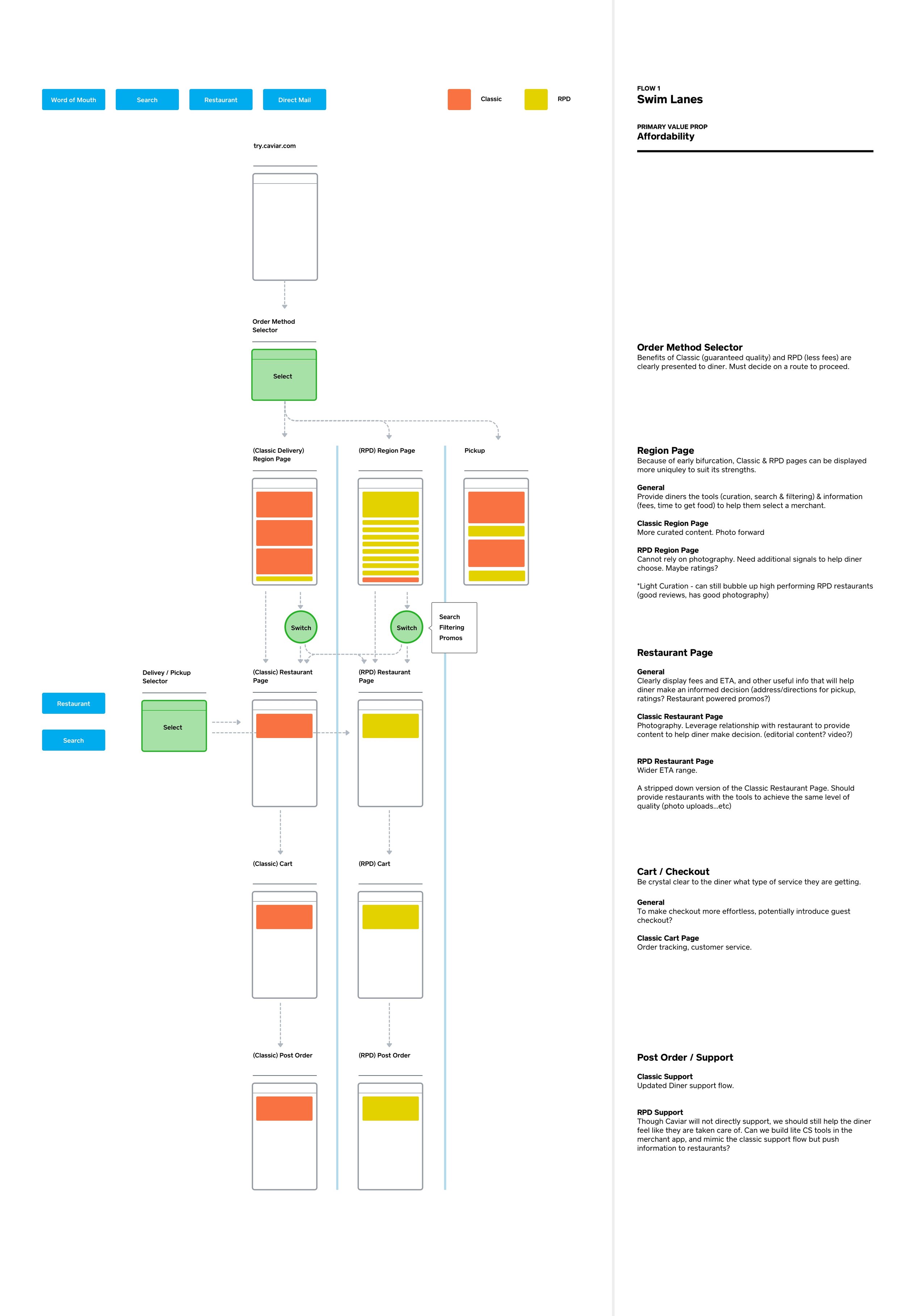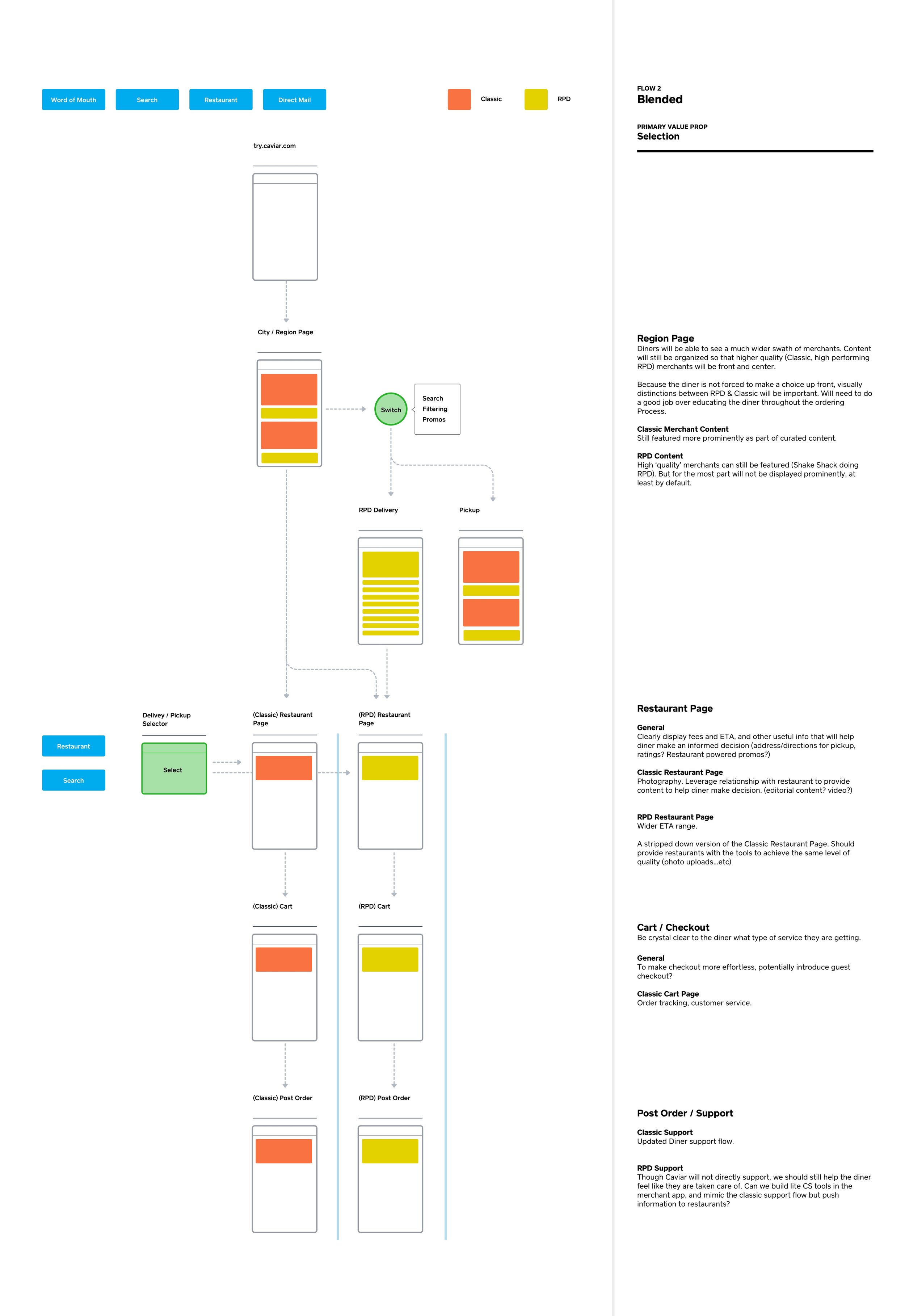For: Caviar
Role: Product Design
Unlocking Caviar’s geographic reach by allowing restaurants to do their own delivery
Project Overview
What is Caviar
Caviar is a food delivery platform that connects customers with their favorite local restaurants so they can order food for either delivery or takeout.
About the project
One of Caviar’s main value prop was how tightly it worked with restaurants, and how polished the ordering experience was. A large reason for this is because Caviar worked in geographic hubs—which allowed for more oversight over it’s delivery team, curated restaurant partnerships and overall quality.
This became an impediment for growth because it required a lot of up front resources, most crucially, spinning up a delivery fleet.
Introducing Restaurant Powered Delivery
The solution was to allow restaurants to do their own delivery. This would alleviate the necessity for a delivery fleet, and allowing any restaurant to join Caviar, truly allowing Caviar to be anywhere.
My Role
As the designer leading the consumer experience, my primary goal was to introduce RPD (restaurant powered delivery) restaurants into the app without degrading the overall curated quality that diners expect from Caviar.
So… any restaurant can join Caviar?
Before thinking through the designs. The first thing was to work with stakeholders to define what the value props to the diners would be for ordering RPD restaurants, and also strategize a way to categorize restaurants so that the ordering experience isn’t watered down by low quality restaurants.
The team came up on the idea of tiers. This was a way to allow any restaurant to join Caviar, but also safeguarding against degrading the ordering experience.
Concepts and flows
The next step was to explore various flows with RPD restaurants injected into the app. We were able to whittle it down to two directions, Swim Lanes (bifurcating experience) & Blended. I then took these two directions and mapped out the user journey so all stakeholders could visualize each solution.


We decided to move forward with Flow 2: Blended for a multitude of reasons, most importantly was the strong conviction that diners care more about seeing all the possible food options before caring about what type of delivery the food will come in.
Mocking up the experience to test with users
Once we aligned blending the restaurants together in a smart and seamless way, the next step was to explore how RPD restaurants would cohabitate traditional Caviar restaurants. Should RPD restaurants be called out? Perhaps Caviar Classic restaurants should be branded? Or perhaps neither should be, and just leverage the metadata to help diners discern.
Mockups in Figma
Validate with diners
Building multiple prototypes, the design team then spent a week talking to existing and new diners to gauge what they cared about when selecting restaurants to order from, as well as their reaction to RPD restaurants vs. Caviar Classic restaurants.
Findings
Delivery time was by the far most important piece of data that diners took into consideration
Superusers tended to have a more negative view of RPD restaurants, however, casual & new users did not discern the difference.
GPS was the biggest benefit of having Caviar deliver versus the restaurants deliver
Final proposed designs
Where we landed on was to keep the restaurant type unbranded, but be very clear throughout the experience when restaurants were going to do their own delivery.










